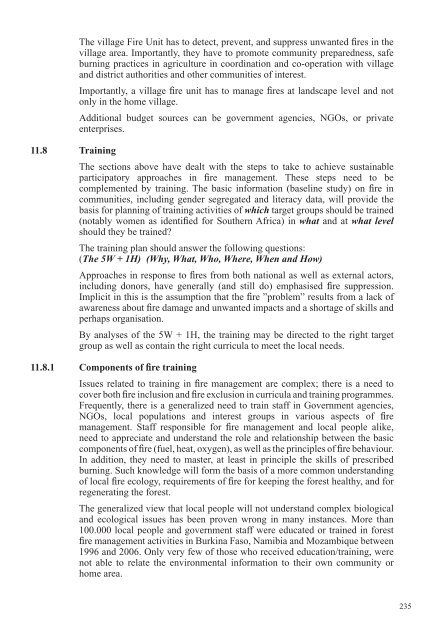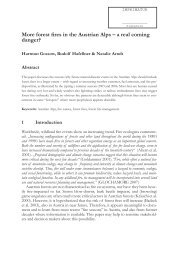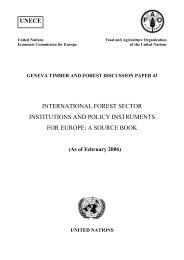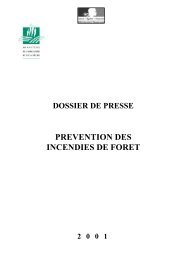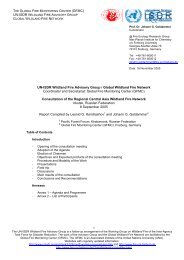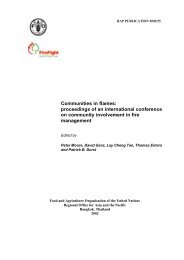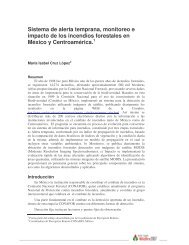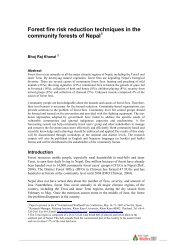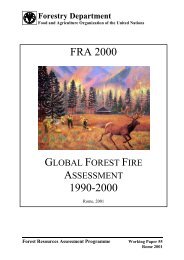Wildland Fire Management: Handbook for Trainers - The Global Fire ...
Wildland Fire Management: Handbook for Trainers - The Global Fire ...
Wildland Fire Management: Handbook for Trainers - The Global Fire ...
You also want an ePaper? Increase the reach of your titles
YUMPU automatically turns print PDFs into web optimized ePapers that Google loves.
<strong>The</strong> village <strong>Fire</strong> Unit has to detect, prevent, and suppress unwanted fi res in the<br />
village area. Importantly, they have to promote community preparedness, safe<br />
burning practices in agriculture in coordination and co-operation with village<br />
and district authorities and other communities of interest.<br />
Importantly, a village fi re unit has to manage fi res at landscape level and not<br />
only in the home village.<br />
Additional budget sources can be government agencies, NGOs, or private<br />
enterprises.<br />
11.8 Training<br />
<strong>The</strong> sections above have dealt with the steps to take to achieve sustainable<br />
participatory approaches in fi re management. <strong>The</strong>se steps need to be<br />
complemented by training. <strong>The</strong> basic in<strong>for</strong>mation (baseline study) on fi re in<br />
communities, including gender segregated and literacy data, will provide the<br />
basis <strong>for</strong> planning of training activities of which target groups should be trained<br />
(notably women as identifi ed <strong>for</strong> Southern Africa) in what and at what level<br />
should they be trained?<br />
<strong>The</strong> training plan should answer the following questions:<br />
(<strong>The</strong> 5W + 1H) (Why, What, Who, Where, When and How)<br />
Approaches in response to fi res from both national as well as external actors,<br />
including donors, have generally (and still do) emphasised fi re suppression.<br />
Implicit in this is the assumption that the fi re ”problem” results from a lack of<br />
awareness about fi re damage and unwanted impacts and a shortage of skills and<br />
perhaps organisation.<br />
By analyses of the 5W + 1H, the training may be directed to the right target<br />
group as well as contain the right curricula to meet the local needs.<br />
11.8.1 Components of fi re training<br />
Issues related to training in fi re management are complex; there is a need to<br />
cover both fi re inclusion and fi re exclusion in curricula and training programmes.<br />
Frequently, there is a generalized need to train staff in Government agencies,<br />
NGOs, local populations and interest groups in various aspects of fi re<br />
management. Staff responsible <strong>for</strong> fi re management and local people alike,<br />
need to appreciate and understand the role and relationship between the basic<br />
components of fi re (fuel, heat, oxygen), as well as the principles of fi re behaviour.<br />
In addition, they need to master, at least in principle the skills of prescribed<br />
burning. Such knowledge will <strong>for</strong>m the basis of a more common understanding<br />
of local fi re ecology, requirements of fi re <strong>for</strong> keeping the <strong>for</strong>est healthy, and <strong>for</strong><br />
regenerating the <strong>for</strong>est.<br />
<strong>The</strong> generalized view that local people will not understand complex biological<br />
and ecological issues has been proven wrong in many instances. More than<br />
100.000 local people and government staff were educated or trained in <strong>for</strong>est<br />
fi re management activities in Burkina Faso, Namibia and Mozambique between<br />
1996 and 2006. Only very few of those who received education/training, were<br />
not able to relate the environmental in<strong>for</strong>mation to their own community or<br />
home area.<br />
235


